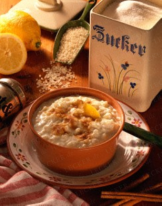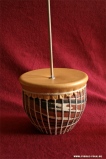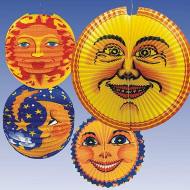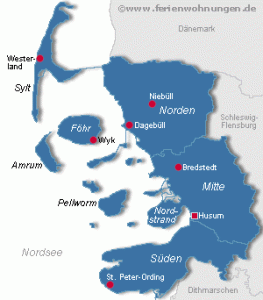„Folklore is based on man’s relationship to the soil“.
The North Frisians, once part of the Saxon clan, kept many Pagan traditions alive up until the early 20th century, in fact they still uphold a few of those ancient traditions to this day.
Even the village youth will gladly partake in customs such as setting out the Niehjahrsgaaf (Yule gift) out for the Puken (elf-like house wight).
These are a few of their traditions:
St. Nicholas’ Day (Nikolaustag)
Sönnerklaas is the Frisian version of Bishop Nikolas of Myra/Greece, more commonly known as “St. Nick” in most English-speaking countries.
Although a Christian holiday, the North Frisians have “paganized” Nikolaus and its annual procession in honor of Nikolaus on Dec. 6th as much as possible. Nikolaus himself reminds of Wotan and his carriage is often drawn by white horses (> Tiuz/Saxnot).
The children traditionally dress up as dwarves, black angels (originally: dark elves/svartalfar) and as “Nikoläuse” which has come to mean Kobolde (goblins).
Yule (Hali-Een)
As already mentioned the Puken is a North Frisian house-wight who keeps the house from harm, protects the family and who even has some influence over the weather, redirecting storms from house or farm and crops to unpopulated areas.
The word is similar to the German word “Puck”. Pucks are the more impish variety of the Puken though.
The Puken used to be honored with a small house altar, but nowadays they are usually only remembered on Yule Eve called Hali-Een, Holy Eve and pronounced similarly to “Halloween”.
They typical Niejahrsgaaf to them is a small bowl of sweetened rice pudding or another sweet treat.
 Until the 20th century Yule pastries were formed in the shape of horses (Saxon), roosters (Heimdall), boars (Frey) but also unsurprisingly ships, helms (resembling sunwheels) and other objects related to seafaring.
Until the 20th century Yule pastries were formed in the shape of horses (Saxon), roosters (Heimdall), boars (Frey) but also unsurprisingly ships, helms (resembling sunwheels) and other objects related to seafaring.
The so-called Isenkuken or Isenkage (iron cakes) were once supposed to ward off the Andersvolk, those of the wee people who showed resentment against humans. After christianization these cakes were still popular in the lower classes and garnished with crosses they were believed to keep the devil out of the house on “Christmas”.
On the day of the Equinox the people of Föhr and Fahrentoft (still!) practice Tamsen. The solstice is the time when the old Germanic people believed that the “wheel of the world” literally stood still. This is why even today it is considered bad luck to leave wheels – or basically anything that can be turned and twisted – outside. This includes hinged gates, bikes, carts with hand levers, handcarts like children often use, etc.
The village youth will scourge the farms and gardens for anything rotatable or hinged on the evening of the equinox and viciously vandalize anything they find. Interestingly, vandalism committed on this day is not persecuted by the law.
New Year’s Eve (Sylvester)
The following is a custom which was practiced on the island of Amrum until the early 20th century.
Children are being dressed up as Hulken, the word being related to Holle, Holde, Holda, Hulda. Hulken are the ghost-like beings following the Wild Hunt once led by Frija (often associated with Frau Holle.)
The disguised children move from house to house in packs and the parents are supposed to “pick their child” out of the crowd.
The original meaning of this tradition was that as ominously disguised and unknown as the children thus arrived the new year. By picking your child out of the crowd you “claimed your own fate” basically.
 Rummelpott used to be a German favorite until it was replaced with Halloween (…) On Sylvester the children would move from house to house in groups, turning a strange-sounding and -looking instrument made of boar or pig bladder, singing songs and asking people for candy or little gifts at their doors.
Rummelpott used to be a German favorite until it was replaced with Halloween (…) On Sylvester the children would move from house to house in groups, turning a strange-sounding and -looking instrument made of boar or pig bladder, singing songs and asking people for candy or little gifts at their doors.
It was especially important the Rummelpott was made out of a pig’s bladder. The boar and pig are animals holy to Frey (“The Lord”) who is often equated with Balder (“The Lord”).
See also https://paganmeltingpot.wordpress.com/2014/11/09/balder-frija-and-the-relics-of-the-pre-germanic-fertility-cult/
Epiphany (Twasche Ülj en Naj)
 Twasche Ülj en Naj (Between Old and New) are the nights between December 25th and January 6th. The Pagan equivalent are the Rauhnächte, twelve days of Yule.
Twasche Ülj en Naj (Between Old and New) are the nights between December 25th and January 6th. The Pagan equivalent are the Rauhnächte, twelve days of Yule.
The heeds, warnings and rules surrounding North Frisian Epiphany are laden with superstition, many christian ones but also a few pre-christian ones of which we can at least make some sense: Twasche Ülj en Naj is regarded as the time of standstill in nature.
Hence it was believed to be bad luck to leave the plough out on the field, because Mother Nature might feel put under pressure. (That’s actually a bit of a sweet superstition.)
Housewives weren’t supposed to weave, because Frija (“Frigg”) as well as the rest of the Gods were believed to be resting during this time.
 Later already christianized customs involved pouring ash on the livestock’s heads.
Later already christianized customs involved pouring ash on the livestock’s heads.
“Ashes on my head” is a contemporary German saying to convey one feels guilty. It has its roots in the medieval custom of rubbing ash into ones’ clothes and onto ones forehead after a loved one died. This kind of public grief was expected during those times.
Later people started believing that this practice might also keep you from death and the ash became a “lucky charm” of sorts.
During winter the North Frisians were cut off from the mainland completely. Their survival relied on their livestock. In the light of all this, the strange superstition at least becomes more understandable.
Shrove Tide (Vahsnächte/”Imbolc”)
Before Christianity stole yet another holiday and named it Fastnacht (night of fasting) this night was known as Faslnacht or as the North Frisians called it, Vahsnächte. Fasln and vahsen literally means “to frolic in boundless joyfulness”. So much for “fasting”… The North Frisians still sometimes refer to what some other Pagans know as “Imbolc” as Vahsnächte und rather than go to church they gather at a pub, singing jolly songs and praising the shy beginnings of spring.
Spring Rituals (Frühlingsbräuche)
Biikebrennen is one such (pre-)spring ritual. Christians turned the Biikebrennen day into “St. Petri’s Day”, but the ancient customs yet remained until the late 19th century. On this day during spring the village gathered to light up bundles of straw sometimes shaped like a man (wicker man) chanting and singing praise to Wotan, begging him to grant them a good harvest.
The calling upon the former chief God of the North Frisians is remarkable for that time and was probably only possible because they were rather far away from the mainland. Anywhere else such a procession would certainly have caused an outrage and immediate prohibition.
Easter (Oostern)
In the 1800s children on the isle of Föhr used to paint eggshells and then catapult the eggs as high and far away as they could with a slingshot. This was meant as a symbolic fertilization of nature. No one remembers where this custom originated but undoubtedly it has quite obvious Pagan connotations rather than Christian ones.
Pötjrin (Föhr) or Njötjrin (Amrum) was another tradition. Children knocked the tip of two eggs together until one of the shells broke. The winner was the one whose shell had stayed intact and he had to consume both broken and intact egg immediately.
Here the fertility ritual is one of competition and the struggle of survival: Whose eggshell (“seed”) is stronger, basically unbreakable?
Harvest Home (Erntefest, “Lughnasad”)
Up until the 1800s the person to last thresh their crops had the Vessegomp (scarecrow, high German: Vogelscheuche). The village youth snuck up to the farmer’s house at night, leaving an actual scarecrow on his threshold as a means of taunting him.
Historians assume that the Vessegomp on the fields wasn’t originally intended to just ward off birds or other animals. From descriptions of the early Vessegomp it appears they were supposed to be modeled after either the Lord Frey or Wotan who was supposed to bless and oversee the growth of crops.
The vilification described above was hence also a means of renouncing the old Gods.
Autumn Rituals and Customs (Herbstfeste)
 Laternelaufen (lantern procession) is a custom still loved all over Germany but especially in the North where it originates. It was a way to greet autumn and that magical yet eerie time between Idisenblót and Mittwinteropferfest, although they were not celebrated anymore during the 1800’s of course.
Laternelaufen (lantern procession) is a custom still loved all over Germany but especially in the North where it originates. It was a way to greet autumn and that magical yet eerie time between Idisenblót and Mittwinteropferfest, although they were not celebrated anymore during the 1800’s of course.
Catholics claim that the lantern procession at the beginning of autumn has no Germanic or Northern origin at all of course and it is hence also mainly only known as a procession in honor of Martin of Tours, “St. Martin”.






